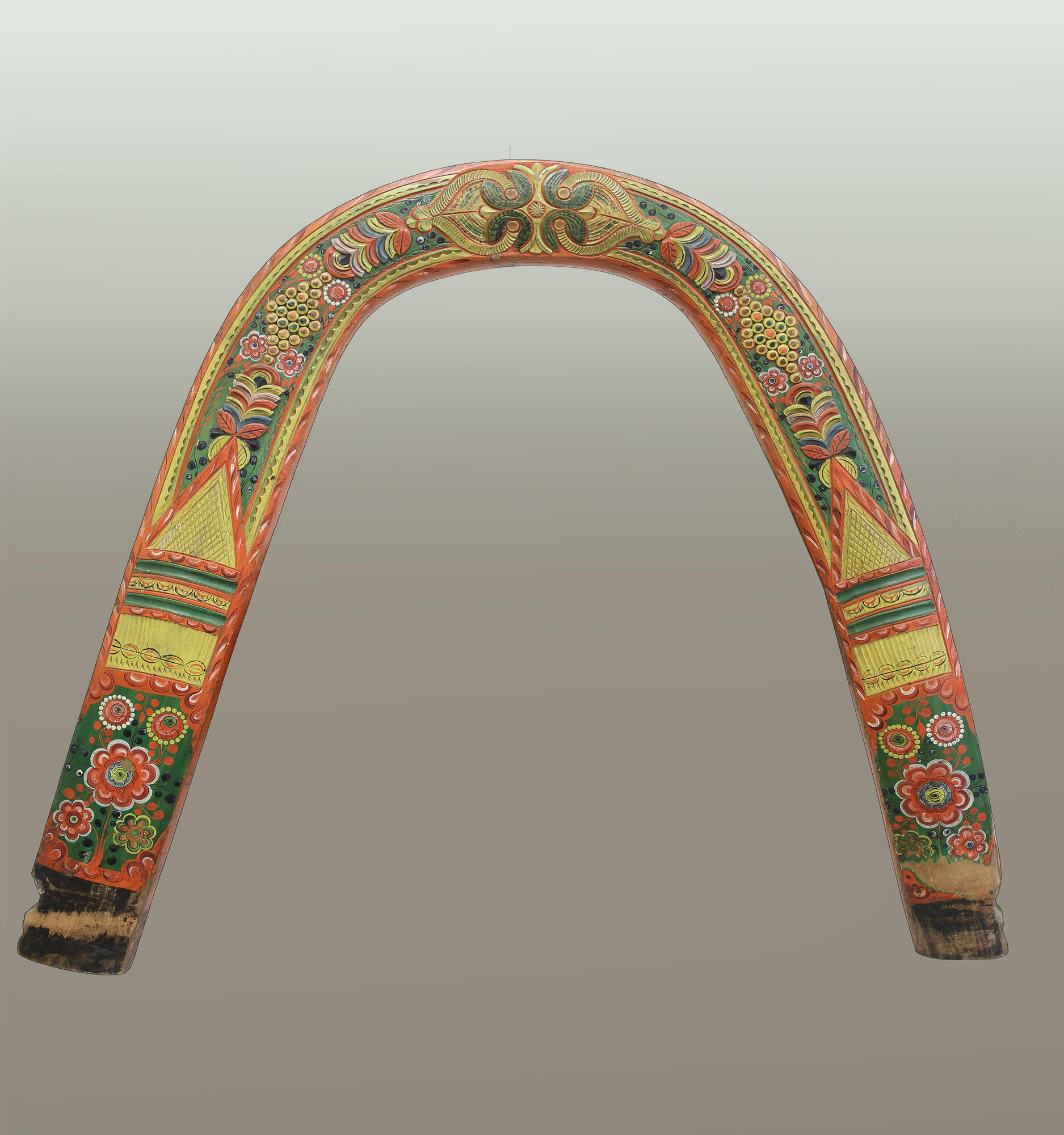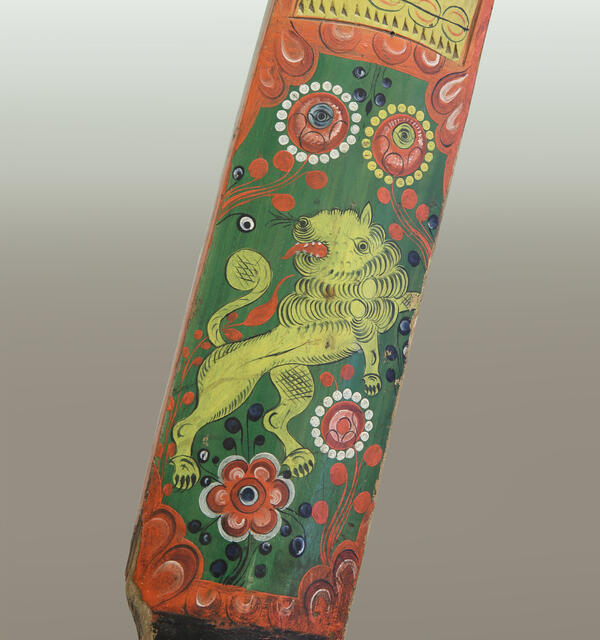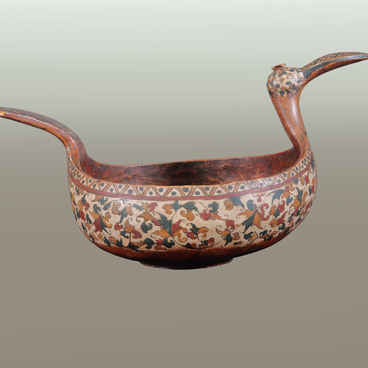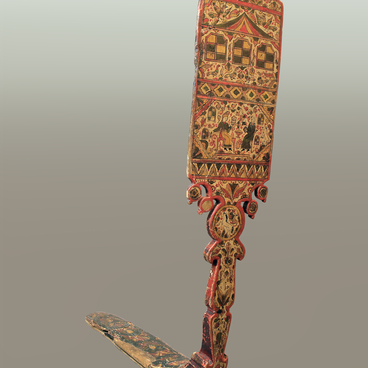The collection of folk art of the Russian Museum contains a unique collection of horse harness items — peasant shaft bows. Some of them participated in the largest all-Russian and foreign handicraft and industrial exhibitions, including the International Exhibition in Paris in 1900. Those that are presented in the permanent exhibition of the Russian Museum date back to the middle and second half of the 19th century and come from the regions of the Russian North and from Ryazan Governorate. In the 1960s, the northern shaft bows were brought from the Arkhangelsk Region by an expedition of the Department of Folk Art. One of them was probably painted by representatives of the well-known Severodvinsk dynasty of artisans — the Amosovs from Bork.
The head of the family, Matvey Gavrilovich Amosov (1833 — 1900) was a peasant craftsman of decorative painting, which became widespread in the 19th and early decades of the 20th century in the villages around the ancient settlement of Borok, Shenkursky District, Arkhangelsk Governorate. The origins of the local decorative painting are connected with the manuscript tradition. Five children of Matvey Gavrilovich Amosov studied with their father and were known as talented folk artists. Items of peasant life, decorated by the artisans of the Amosov family — distaffs, sledges, rakes, and shaft bows — are classic examples of traditional Boretsky painting.
It is believed that shaft bows appeared in Russia as a kind of shock absorber that dampened the shock the suspension received when driving over rough or uneven road surfaces. In Western Europe, shaft bows were a rare occurrence. Shaft arcs came in two types: thin ones, used by city coachmen, and large and heavy, used by peasants for agricultural work. The permanent exhibition of folk art of the Russian Museum demonstrates amazingly beautiful wedding shaft bows. They are decorated with painted geometric carvings depicting grape clusters, floral images and stenciled lions.
The process of making shaft bows is not easy. The wood had to be flexible and durable. Elm, birch, walnut and some other species were the most suitable ones. They were taken in bulk to the bazaars. The shaft bows, not yet decorated or ornamented only with carvings, were bought and given to well-known carvers and painting artisans for decoration. It was not cheap: such a shaft bow became a source of pride, and often the name of the owner, along with the date of purchase, was written on the edge. On the shaft bow from the Northern Dvina region, there is an inscription near the edge with the date (1886) and the name of its owner — “peasant Ivan Timofeev Osokin”.
The head of the family, Matvey Gavrilovich Amosov (1833 — 1900) was a peasant craftsman of decorative painting, which became widespread in the 19th and early decades of the 20th century in the villages around the ancient settlement of Borok, Shenkursky District, Arkhangelsk Governorate. The origins of the local decorative painting are connected with the manuscript tradition. Five children of Matvey Gavrilovich Amosov studied with their father and were known as talented folk artists. Items of peasant life, decorated by the artisans of the Amosov family — distaffs, sledges, rakes, and shaft bows — are classic examples of traditional Boretsky painting.
It is believed that shaft bows appeared in Russia as a kind of shock absorber that dampened the shock the suspension received when driving over rough or uneven road surfaces. In Western Europe, shaft bows were a rare occurrence. Shaft arcs came in two types: thin ones, used by city coachmen, and large and heavy, used by peasants for agricultural work. The permanent exhibition of folk art of the Russian Museum demonstrates amazingly beautiful wedding shaft bows. They are decorated with painted geometric carvings depicting grape clusters, floral images and stenciled lions.
The process of making shaft bows is not easy. The wood had to be flexible and durable. Elm, birch, walnut and some other species were the most suitable ones. They were taken in bulk to the bazaars. The shaft bows, not yet decorated or ornamented only with carvings, were bought and given to well-known carvers and painting artisans for decoration. It was not cheap: such a shaft bow became a source of pride, and often the name of the owner, along with the date of purchase, was written on the edge. On the shaft bow from the Northern Dvina region, there is an inscription near the edge with the date (1886) and the name of its owner — “peasant Ivan Timofeev Osokin”.





